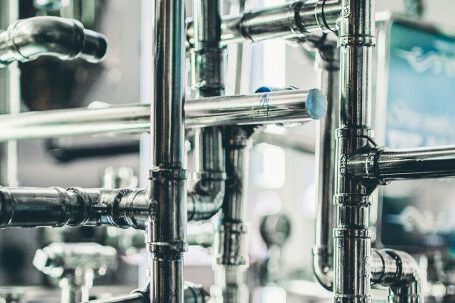Winter is a beautiful season, with snow-covered landscapes and cozy nights by the fire. However, it also brings potential risks to our homes, such as frozen pipes. When water freezes within a pipe, it expands and can cause the pipe to burst, leading to costly repairs and water damage. To avoid this unfortunate situation, it is crucial to take preventive measures. In this article, we will discuss the best ways to prevent frozen pipes and ensure the safety of your home.
Insulate Exposed Pipes
One of the most effective ways to prevent frozen pipes is by insulating them properly. Insulation acts as a barrier, protecting the pipes from the freezing temperatures outside. Identify any exposed pipes in your home, such as those in the basement, attic, or crawl spaces, and wrap them with insulation sleeves or foam. This simple step can go a long way in preventing frozen pipes.
Seal Drafts and Openings
Drafts and openings in your home can allow cold air to enter and affect the temperature of your pipes. Check for any gaps or cracks in windows, doors, or walls, and seal them with weatherstripping or caulking. By minimizing the cold air infiltration, you can maintain a more consistent and warmer temperature around your pipes, reducing the risk of freezing.
Keep a Constant Temperature
Maintaining a constant temperature in your home, especially during the night or when you are away, is crucial in preventing frozen pipes. Set your thermostat to a minimum temperature of 55 degrees Fahrenheit (12 degrees Celsius) to ensure that the pipes are adequately heated. Additionally, consider opening cabinet doors under sinks to allow warm air to circulate around the pipes.
Allow Faucets to Drip
When temperatures drop significantly, it can be helpful to allow faucets to drip slightly. Allowing a slow and steady flow of water through the pipes can prevent them from freezing. Moving water is less likely to freeze compared to stagnant water. Although this may result in a slightly higher water bill, it is a small price to pay compared to the potential damage caused by frozen pipes.
Drain Exterior Water Sources
Exterior water sources, such as garden hoses and sprinkler systems, are susceptible to freezing. Before winter arrives, make sure to drain and disconnect these water sources. Shut off the supply valve and drain any remaining water to prevent it from freezing and damaging the pipes. Store the hoses indoors until the warmer months return.
Consider Pipe Heating
In areas where freezing temperatures are common, installing pipe heating cables can be an excellent preventive measure. These cables wrap around the pipes and provide heat to keep them above freezing temperatures. Ensure that the cables are installed correctly and follow the manufacturer’s instructions to ensure their effectiveness and safety.
Conclusion: Protect Your Pipes, Protect Your Home
Preventing frozen pipes is essential to ensure the safety and integrity of your home. By following the tips mentioned above, such as insulating exposed pipes, sealing drafts, maintaining a constant temperature, allowing faucets to drip, draining exterior water sources, and considering pipe heating, you can significantly reduce the risk of frozen pipes. Remember, prevention is always better than dealing with the consequences of burst pipes. By taking proactive measures, you can enjoy the winter season without worrying about the potential damage caused by frozen pipes. Stay warm and keep your pipes protected!



